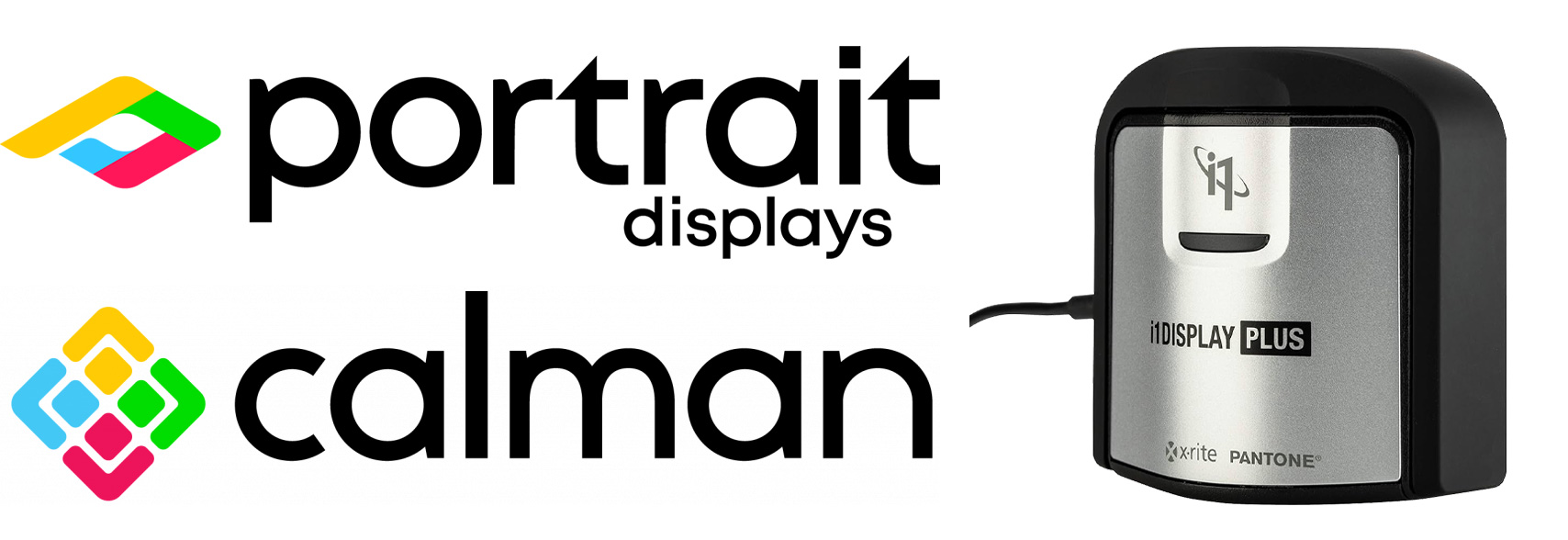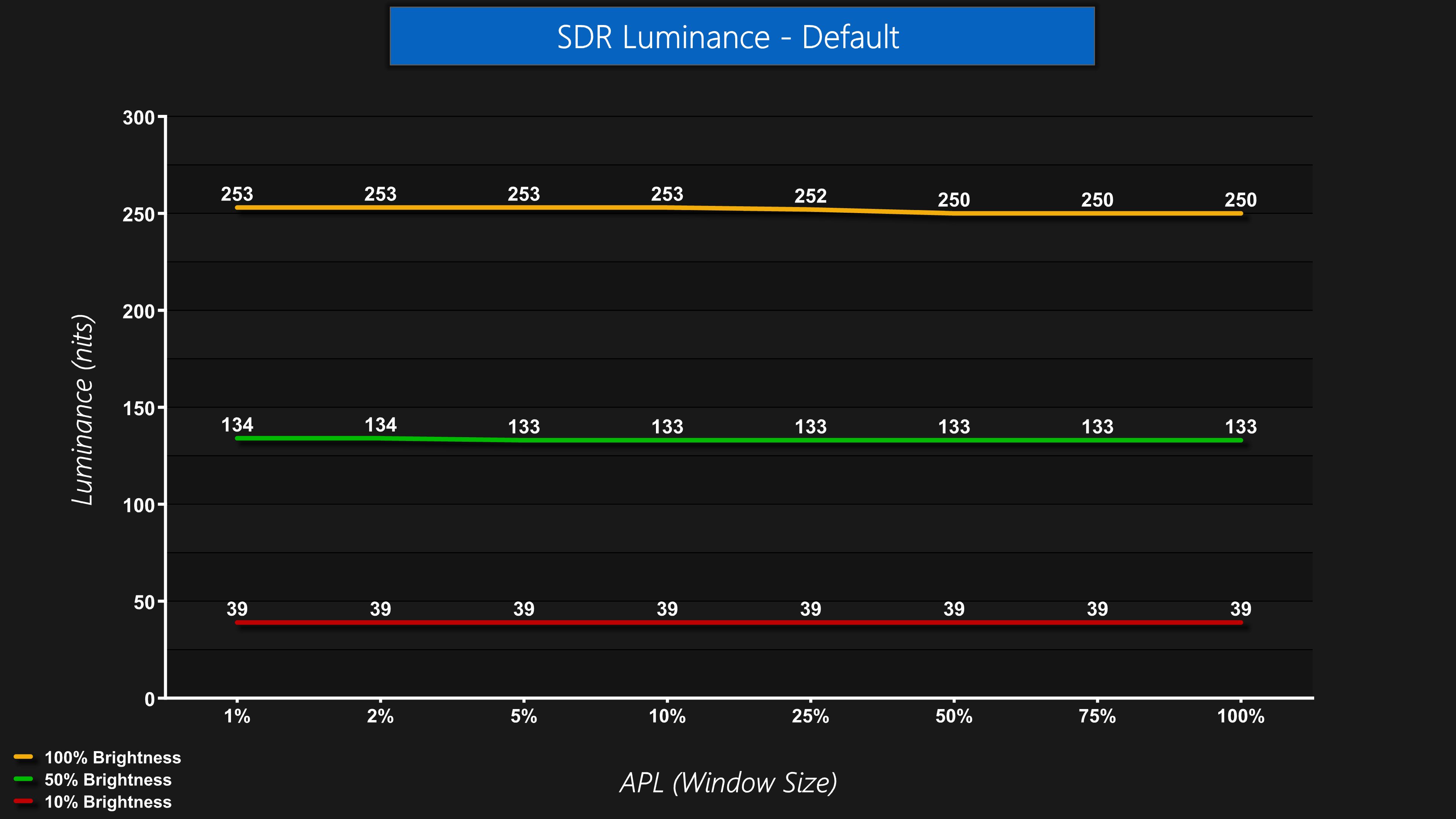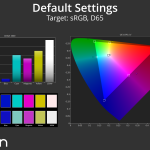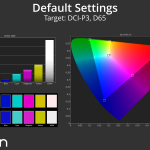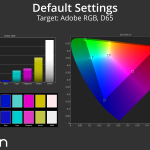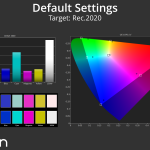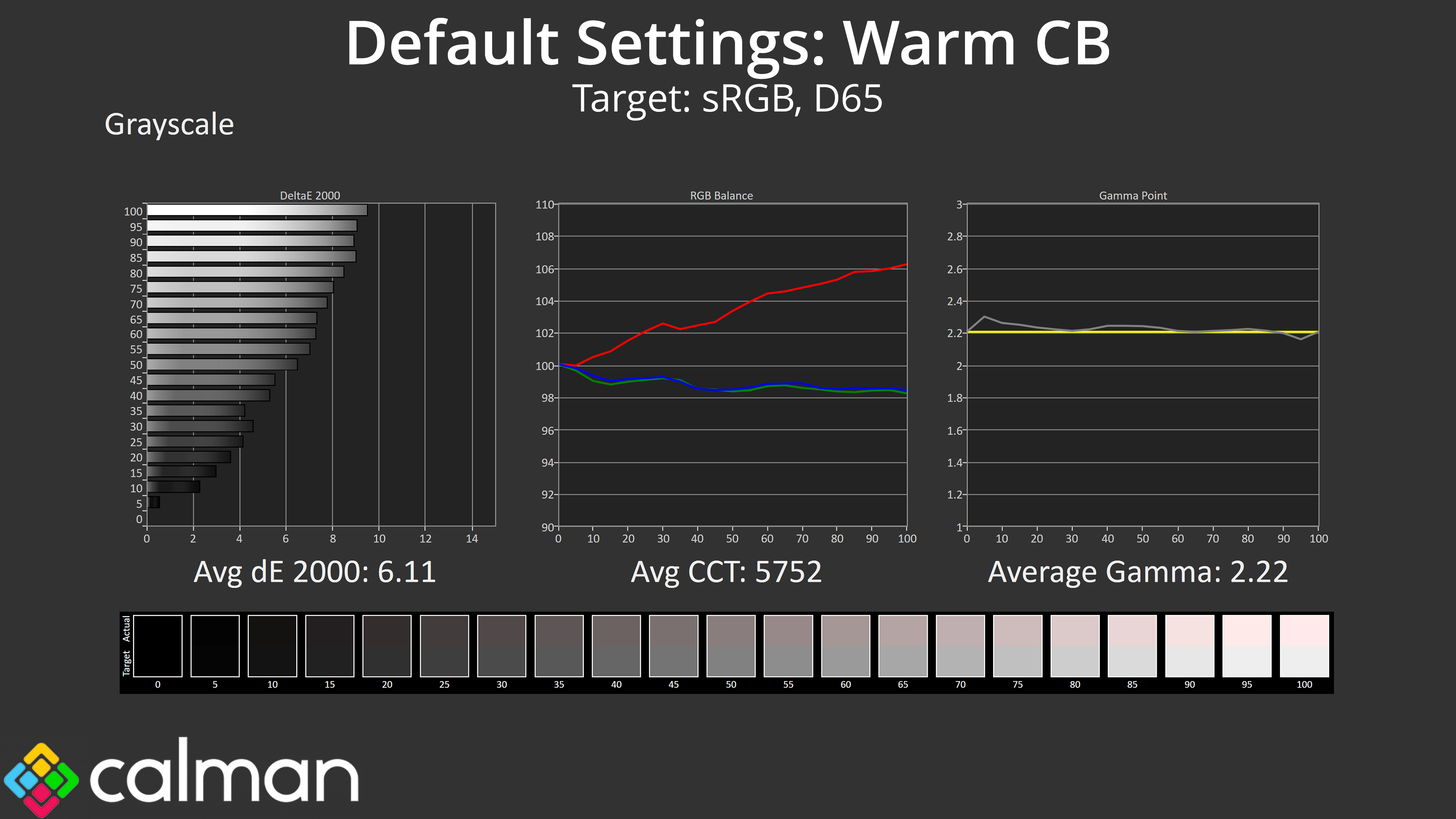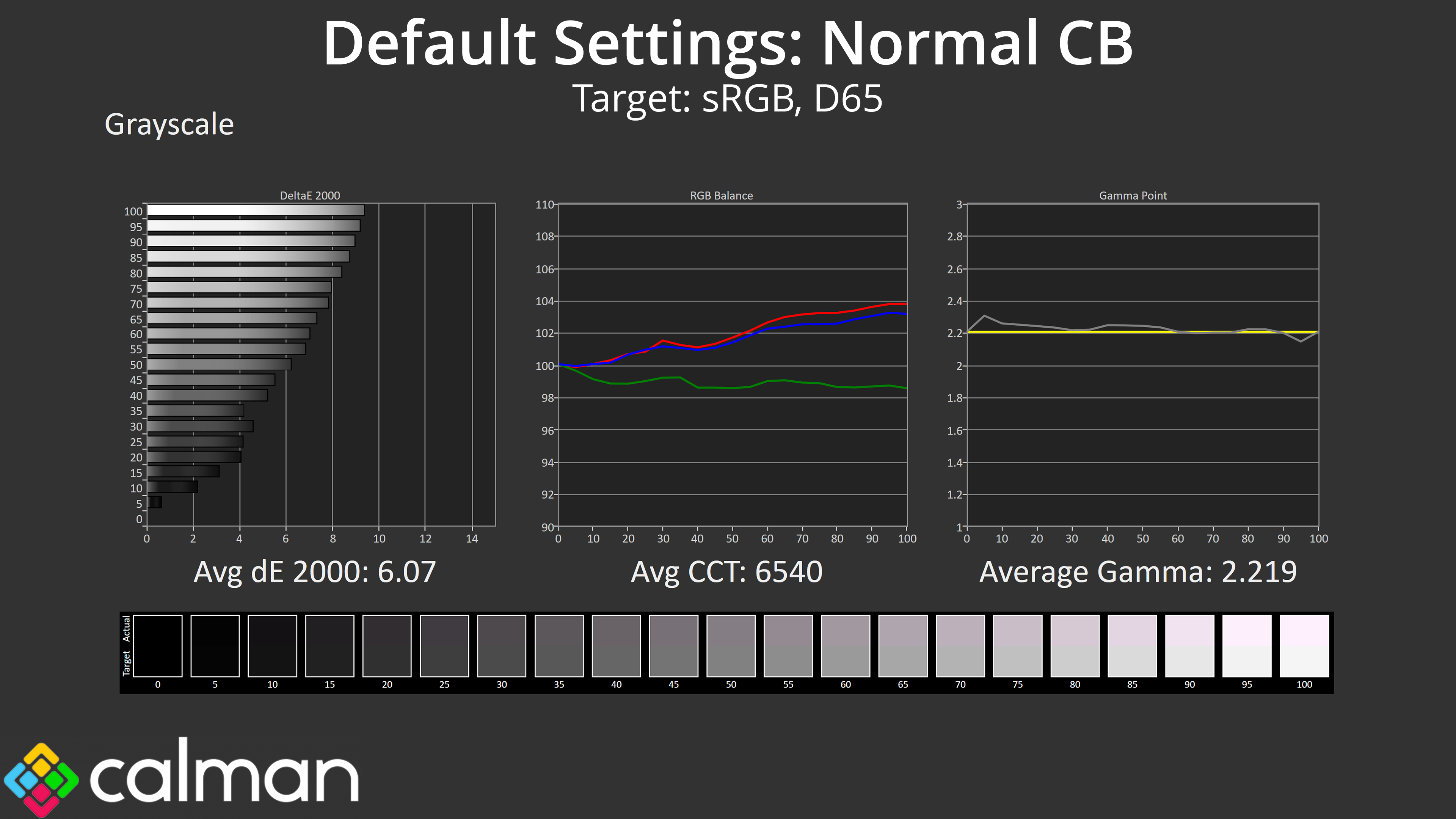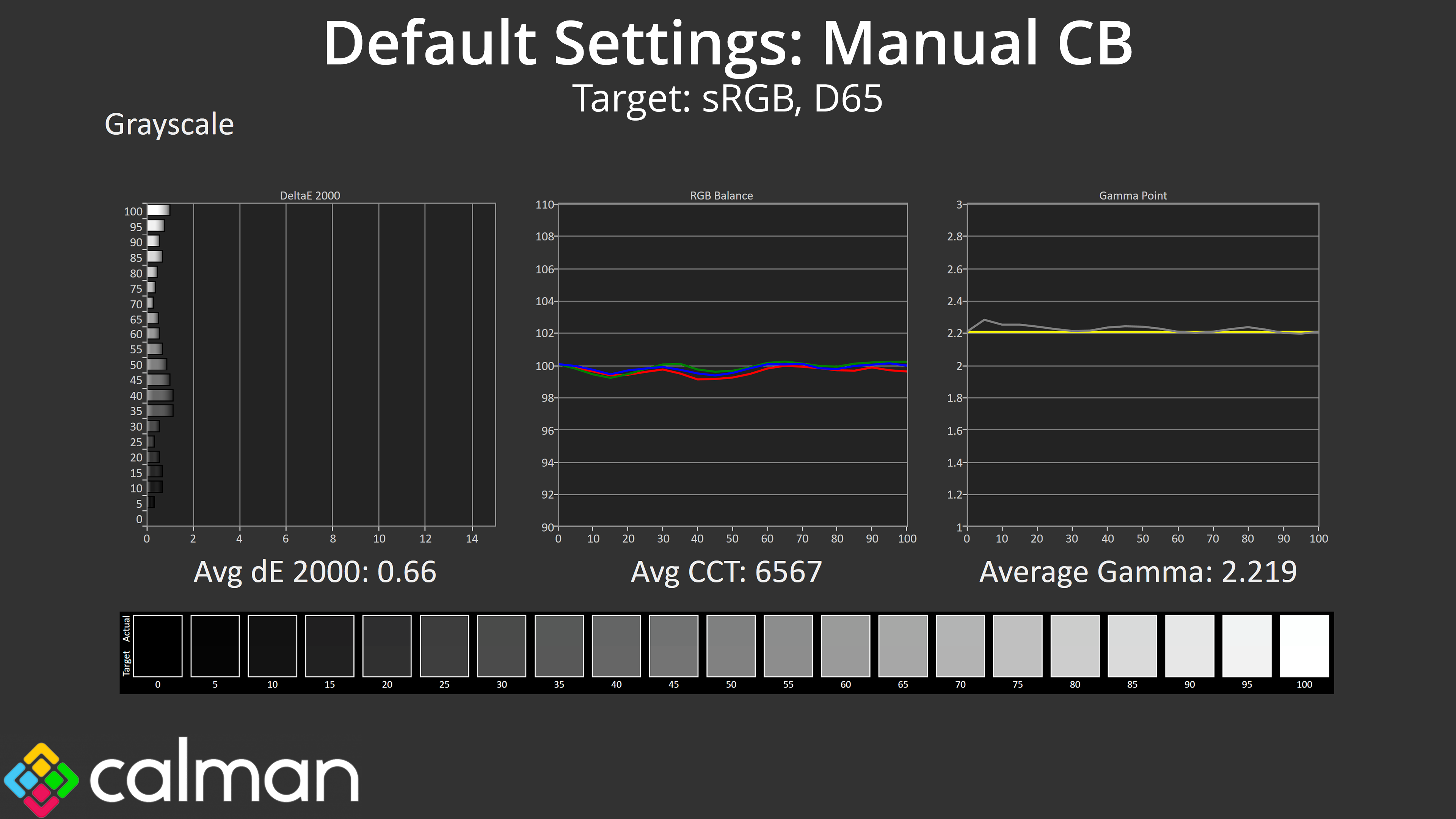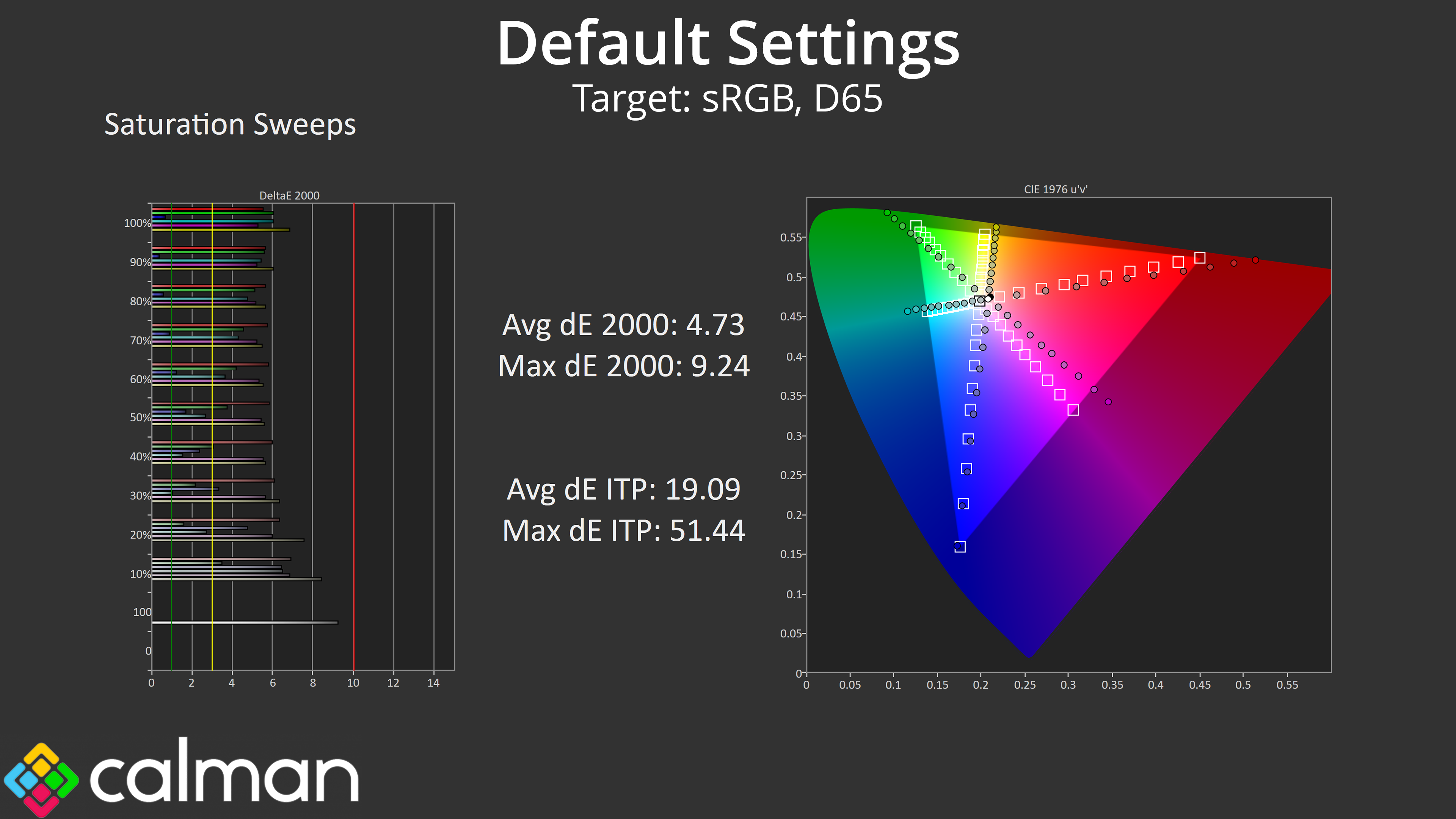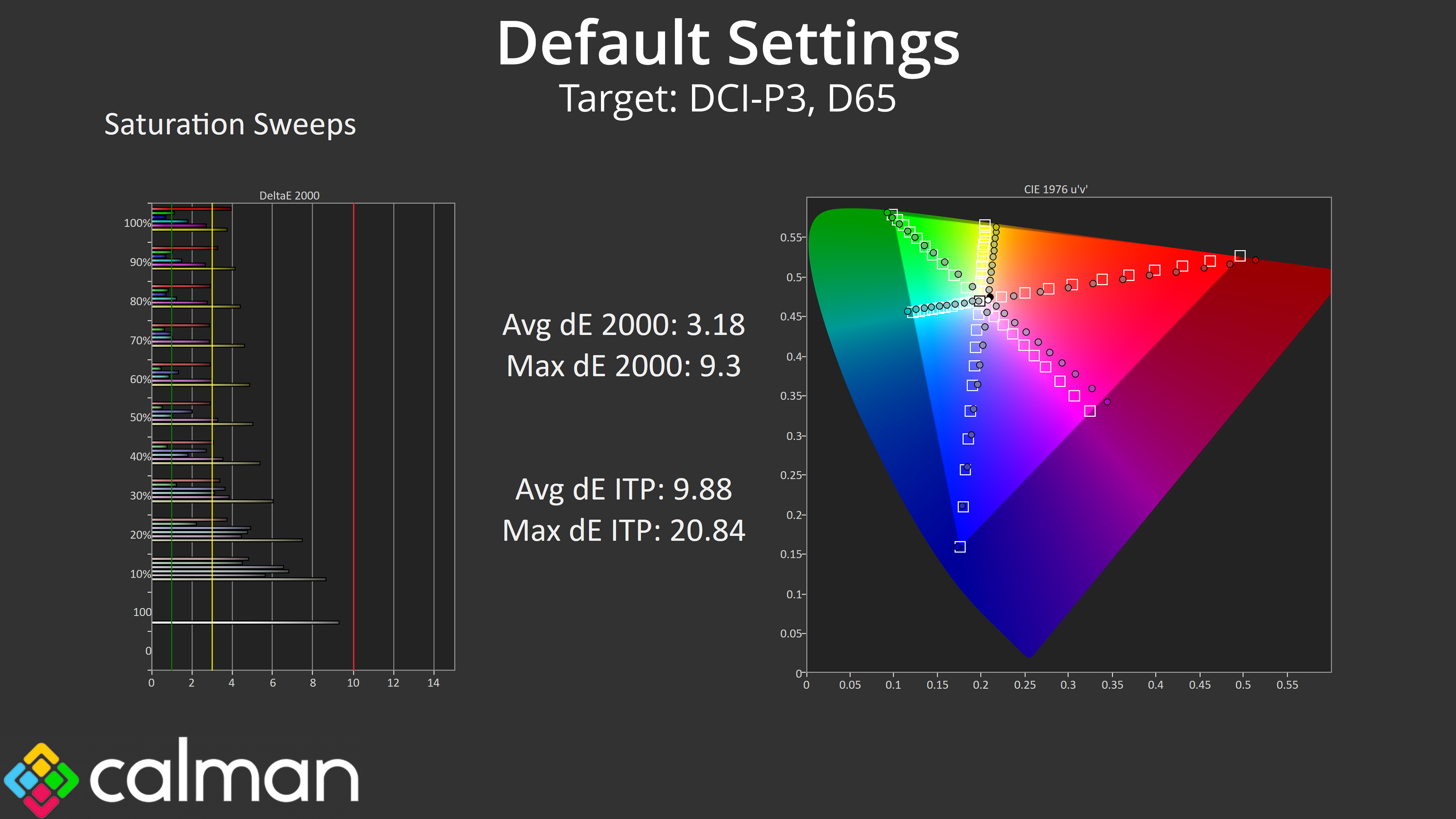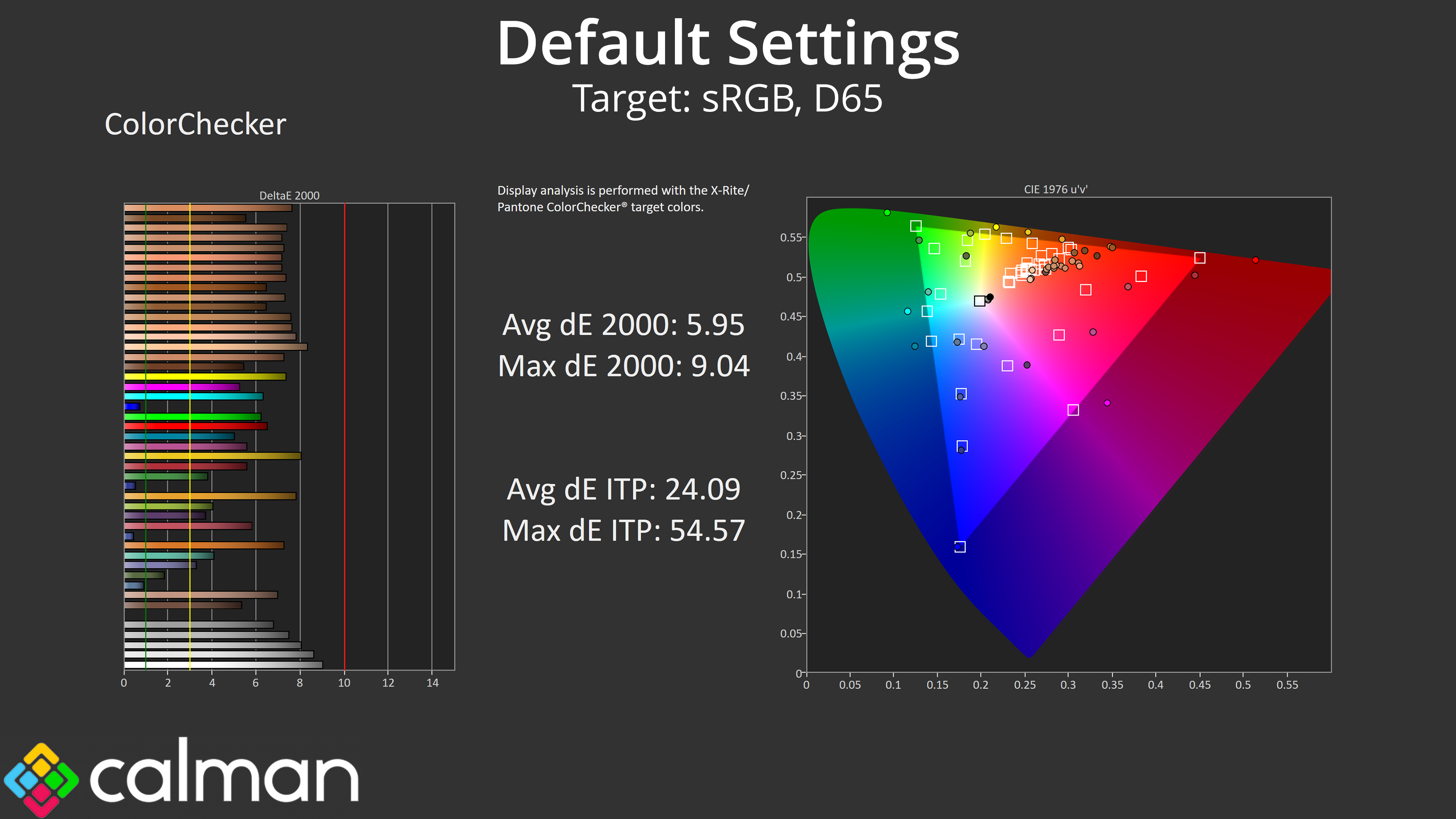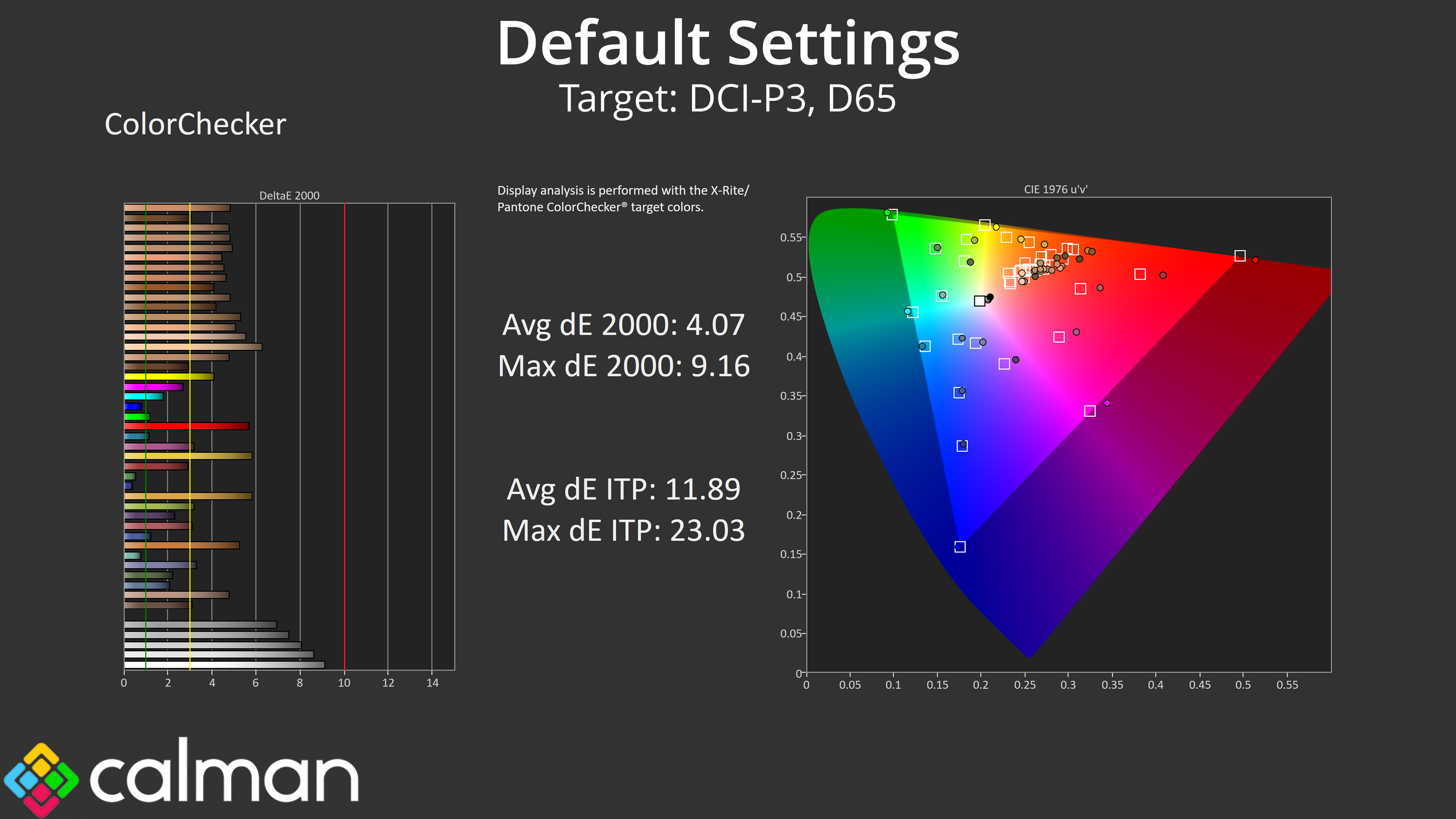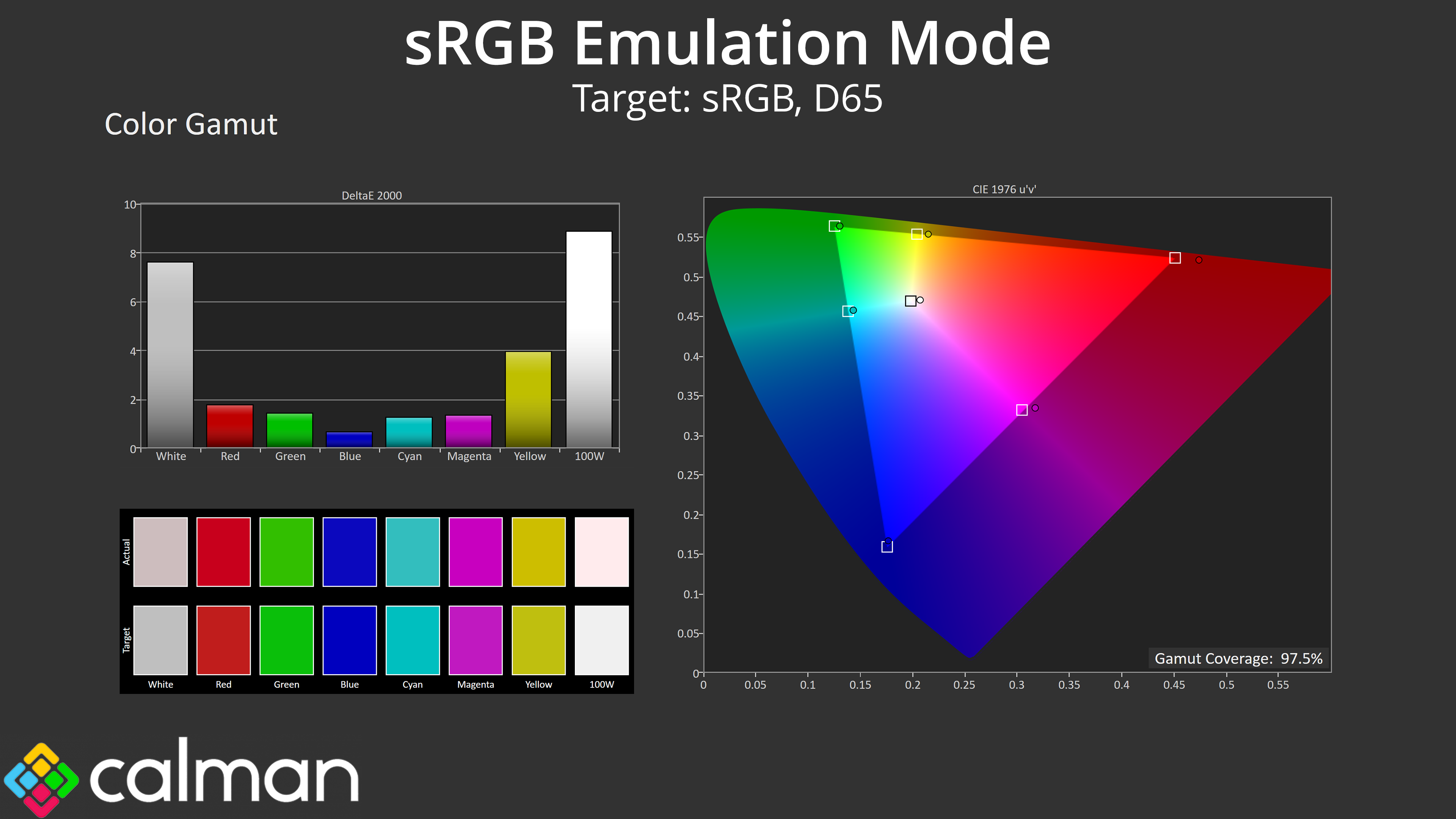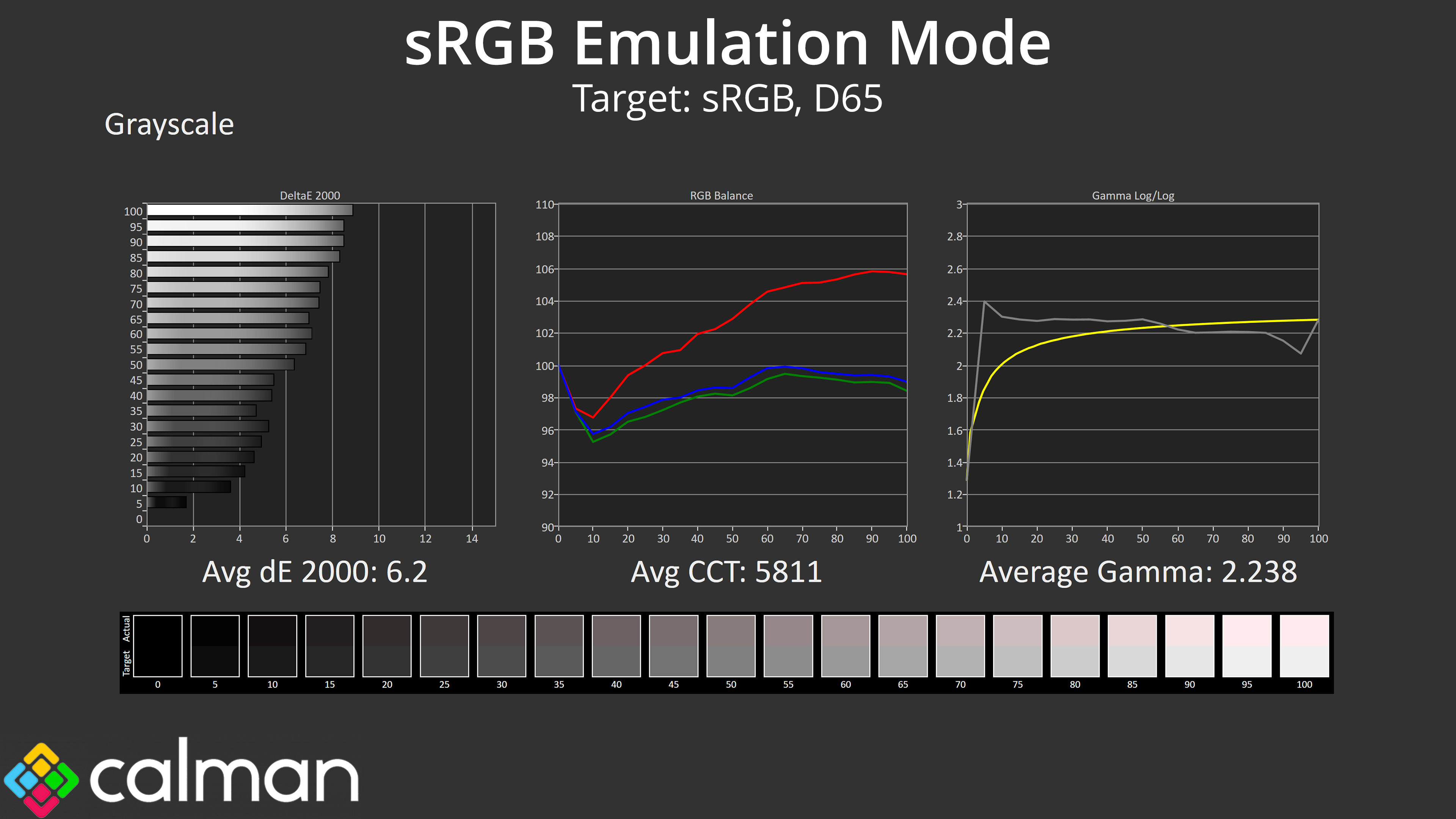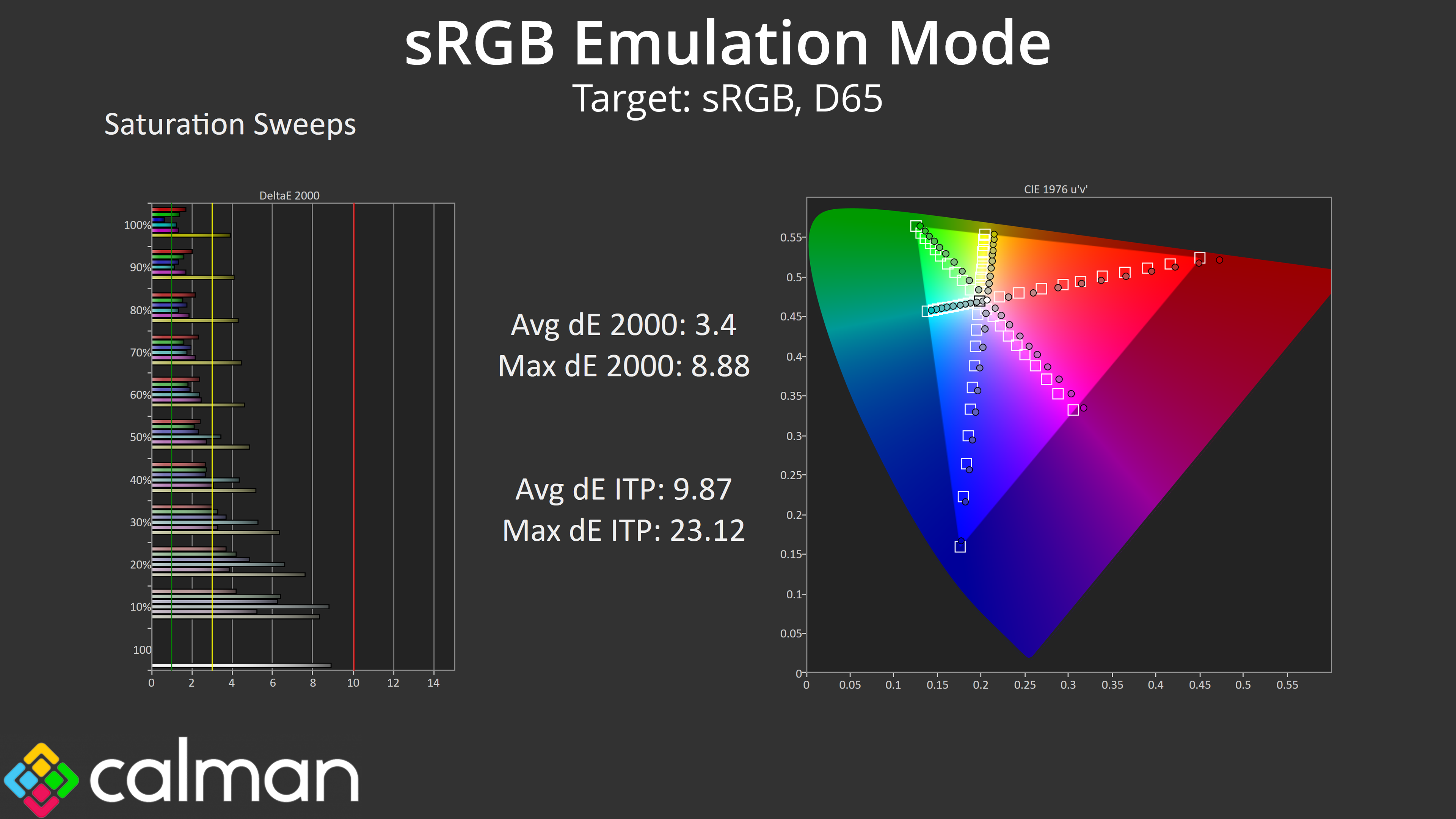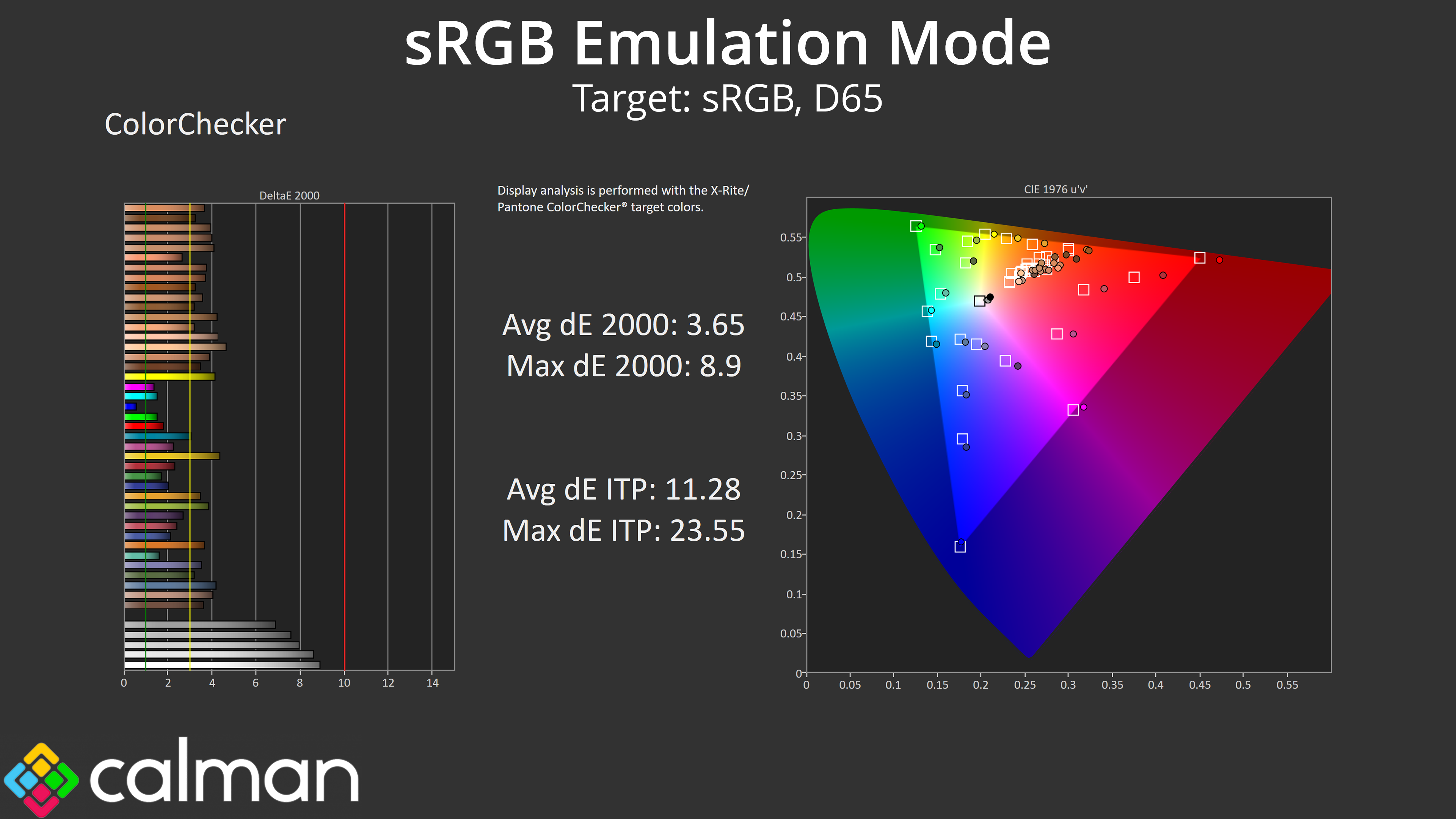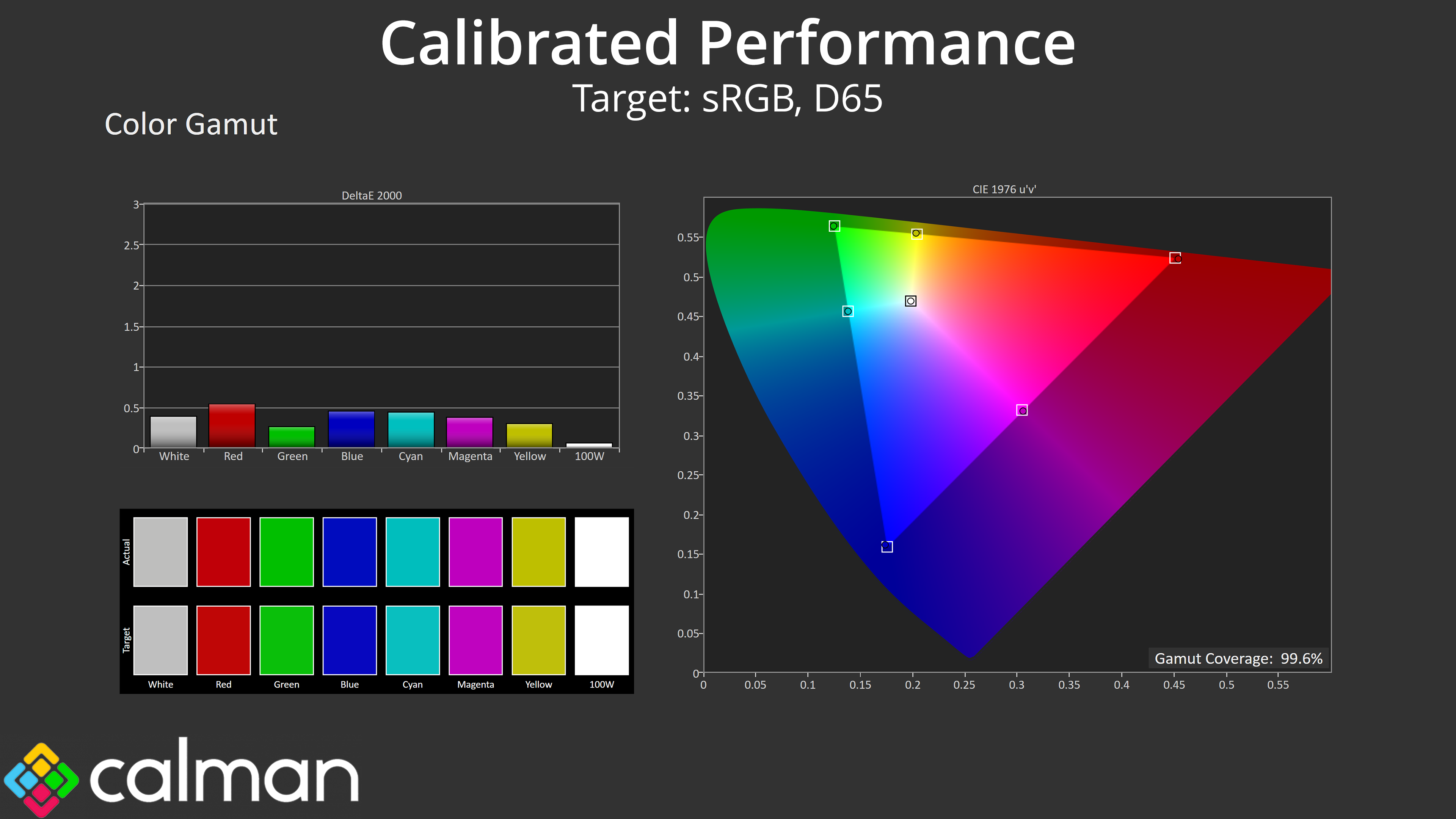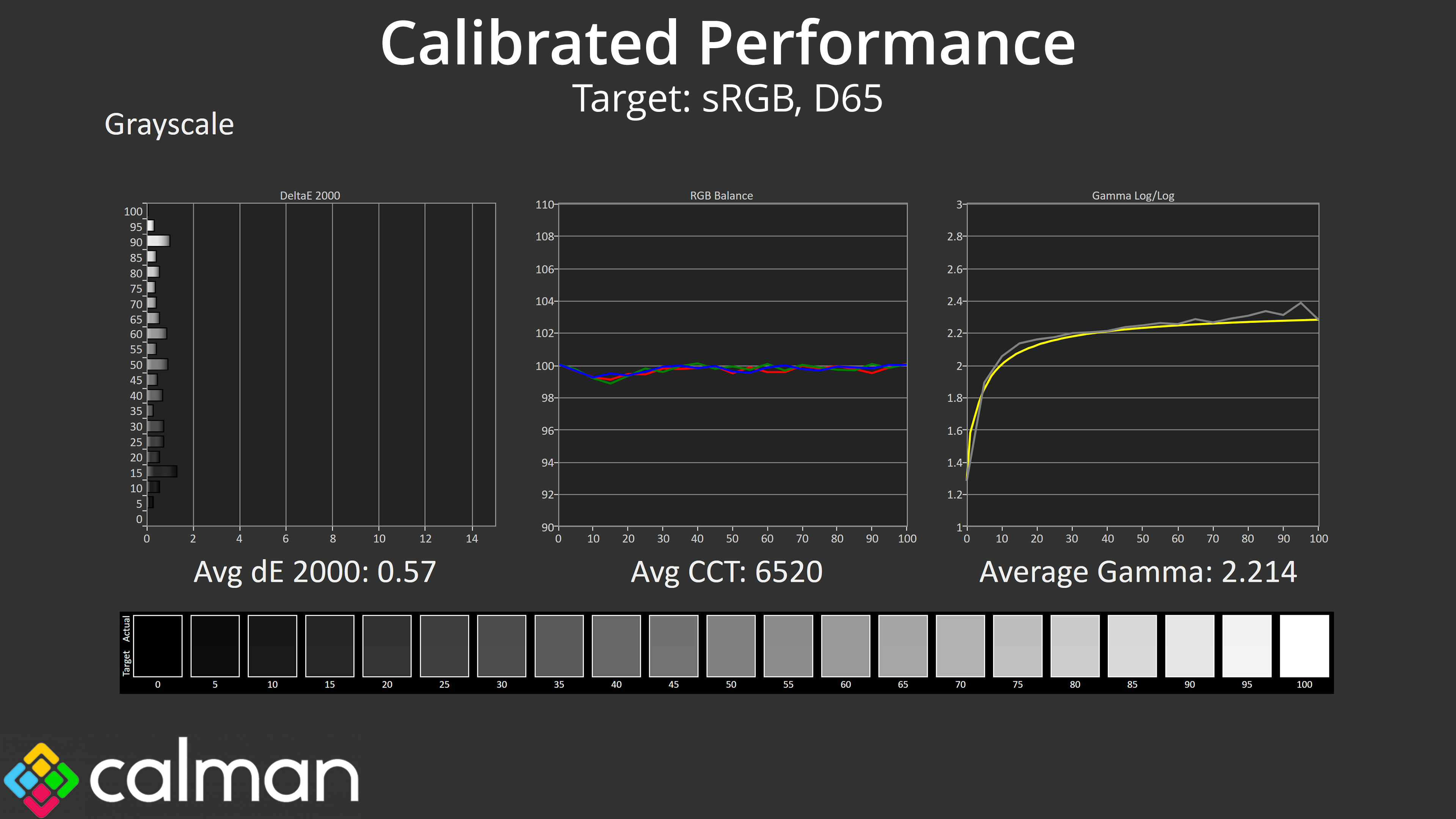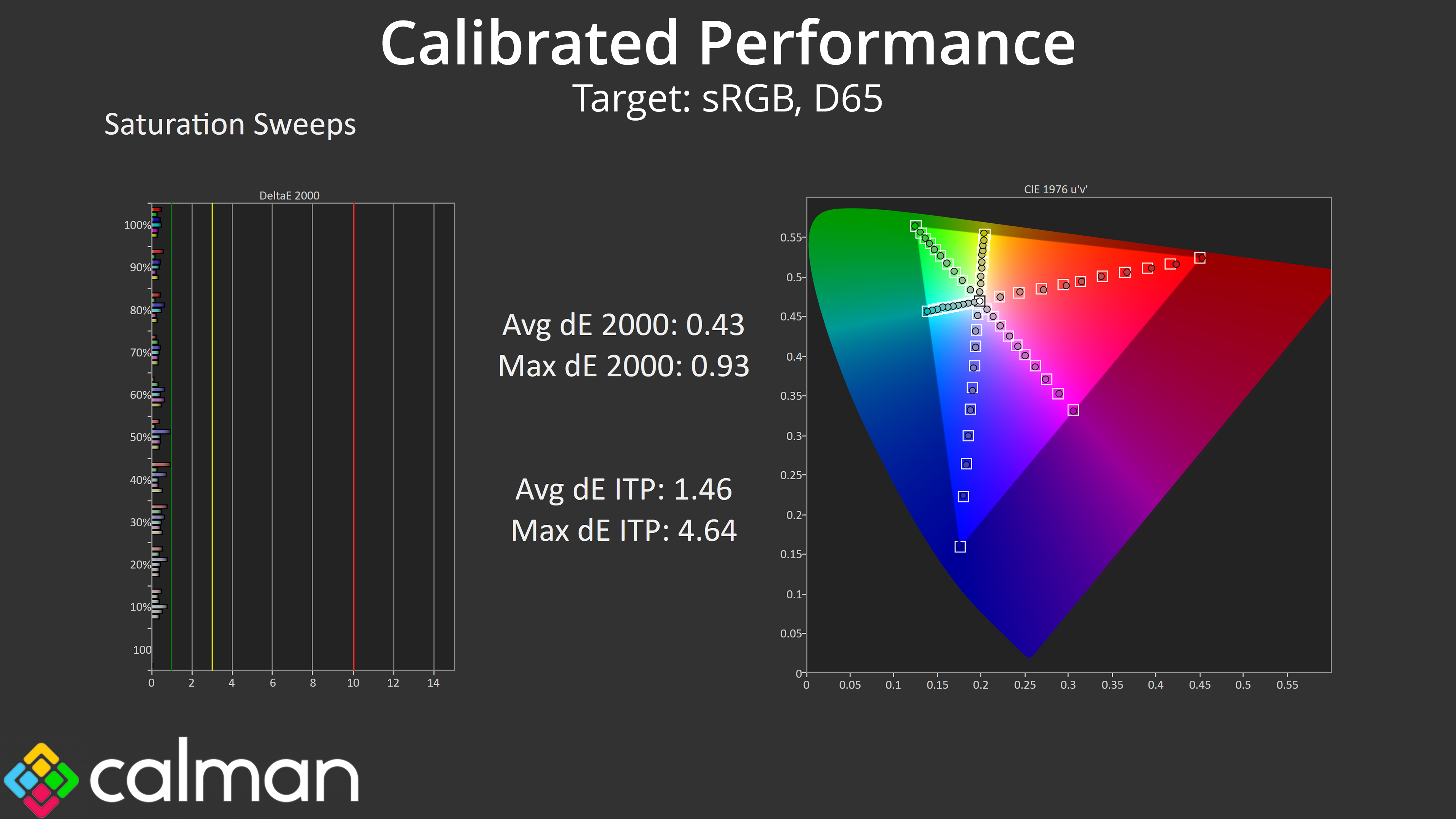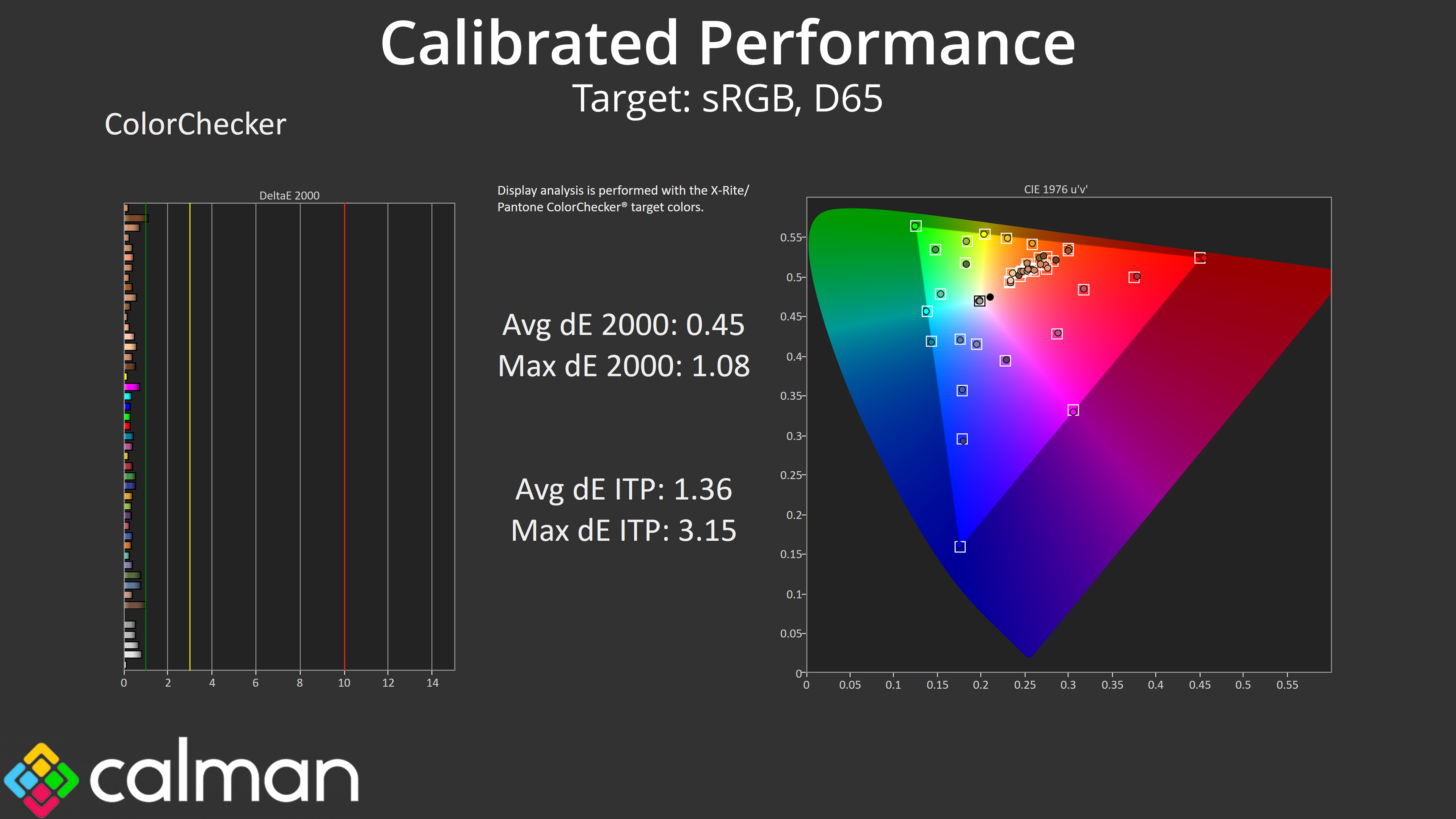Our main test involves using an X-Rite i1 Display Pro Plus colorimeter and utilising Portrait Display's Calman Ultimate software. The device sits on top of the screen while the software generates colour tones and patterns, which it compares against predetermined values to work out how accurate the screen is.
The results show:
- A monitor’s maximum brightness in candelas or cd/m2 at various levels set in the OSD.
- A monitor’s contrast ratio at various brightness levels in the OSD.
- Gamut coverage, primarily focusing on sRGB and DCI-P3 colour spaces.
- Greyscale accuracy, measured across 20 shades, with an average colour balance reported.
- The exact gamma levels, with a comparison against preset settings in the OSD.
- The colour accuracy, expressed as a Delta E ratio, with a result under 3 being fine for normal use, and under 2 being great for colour-accurate design work.
We first run these tests with the display in its out-of-the-box state, with all settings on default. If there is an sRGB emulation option or other useful mode then we may test that too. We then calibrate the screen using the Calman Ultimate software and run the tests again.
You can read more about our test methodology HERE.
Default settings
Brightness and Contrast (Full Screen)
| OSD Brightness | White Luminance (cd/m2) | Black Luminance (cd/m2) | Contrast Ratio |
| 0% | 15.8 | 0.00 | ~Infinite |
| 25% | 74.5 | 0.00 | ~Infinite |
| 50% | 131.8 | 0.00 | ~Infinite |
| 75% | 190.9 | 0.00 | ~Infinite |
| 100% | 249.4 | 0.00 | ~Infinite |
Starting off with brightness testing, things are very typical of a QD-OLED monitor, with a minimum of just 15.8 nits ranging up to a maximum of 249.4 nits for a full screen white. Black levels are zero, due to the per-pixel nature of the OLED panel, resulting in effectively infinite contrast.
Luminance is also very steady regardless of the window size (APL). Some monitors, typically WOLED panels, will show a noticeable drop off in brightness as the window size gets bigger, even in SDR, but not so for the AG276UZD.
Gamut (CIE 1976)
| Colour space | Coverage (%) |
| sRGB | 100 |
| DCI-P3 | 99.3 |
| Adobe RGB | 95.9 |
| Rec.2020 | 77.3 |
Gamut is as wide as we'd expect from a QD-OLED, far exceeding the sRGB space and offering 99.3% coverage for DCI-P3, alongside 95.9% Adobe RGB reporting, and then 77.3% coverage for Rec.2020.
Greyscale
As for greyscale performance, AOC defaults to using the ‘Warm' colour balance in the OSD and it is certainly that, with an average CCT of 5752K. It's quite obvious even to the naked eye that white shades have a noticeably red tint. Gamma tracking, though, is pretty spot on, closely hugging the 2.2 target across all twenty shades tested.
There is also a Normal colour balance option which does improve the average colour temperature, though the green channel is still very low, resulting in a purplish tint to the image this time, so it's still not very accurate.
Thankfully AOC does include a manual colour balance option, and I reduced the Red channel to 44, the Green channel to 48 and left Blue at 50. That gave stellar results, improving the average CCT to 6567K, while our average greyscale dE 2000 hit just 0.66.
Saturation
However, we do run our tests using the out of the box settings, so it's back to the Warm colour balance mode for our saturation sweeps where, as expected, we see large amounts of over-saturation due to the very wide gamut.
Colour Accuracy
That over-saturation, along with the overly warm colour balance, also means default colour accuracy is poor, averaging a dE 2000 of 5.95 when comparing against the sRGB space, and that only improves slightly to 4.07 relative to the DCI-P3 space.
sRGB Emulation Mode
AOC does include an sRGB mode in the OSD, but it still uses the same Warm colour balance mode, so while the gamut is clamped to avoid over-saturation, the image is still far too red-tinged. The colour accuracy average dE 2000 of 3.65 indicates some improvement over default settings, but it's still pretty mediocre overall. The sRGB mode also locks down settings such as manual colour balance, so there's no way to improve on these results.
Calibrated Results
That leaves us with calibration as our last solution to improve matters, and it had a phenomenal effect on the AG276UZD. Results are stellar across the board, with both the saturation and colour accuracy results averaging dE 2000s of below 0.5.
 KitGuru KitGuru.net – Tech News | Hardware News | Hardware Reviews | IOS | Mobile | Gaming | Graphics Cards
KitGuru KitGuru.net – Tech News | Hardware News | Hardware Reviews | IOS | Mobile | Gaming | Graphics Cards


